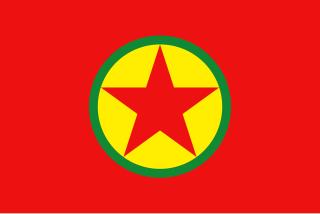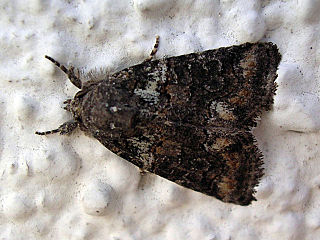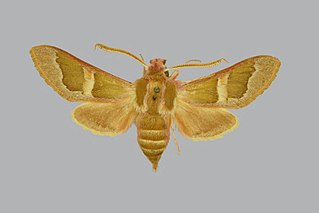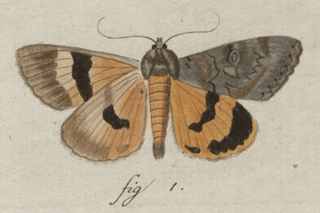
The Middle East is a geopolitical region encompassing the Arabian Peninsula, the Levant, Turkey, Egypt, Iran, and Iraq. The term came into widespread usage as a replacement of the term Near East beginning in the early 20th century. The term "Middle East" has led to some confusion over its changing definitions, and being seen as too Eurocentric. The region includes the vast majority of the territories included in the closely associated definition of West Asia, but without the South Caucasus, and additionally includes all of Egypt and all of Turkey.

The Kurdistan Workers' Party or PKK is a Kurdish militant political organization and armed guerrilla movement which historically operated throughout Kurdistan but is now primarily based in the mountainous Kurdish-majority regions of southeastern Turkey and northern Iraq. Since 1984, the PKK has utilized asymmetric warfare in the Kurdish–Turkish conflict. Although the PKK initially sought an independent Kurdish state, in the 1990s its goals changed to seeking autonomy and increased political and cultural rights for Kurds within Turkey.

West Asia, also called Western Asia or Southwest Asia, is the westernmost region of Asia. As defined by most academics, UN bodies and other institutions, the subregion consists of Anatolia, the Arabian Peninsula, Iran, Mesopotamia, the Armenian Highlands, the Levant, the island of Cyprus, the Sinai Peninsula, and the southern part of the Caucasus Region (Transcaucasia). The region is separated from Africa by the Isthmus of Suez in Egypt, and separated from Europe by the waterways of the Turkish Straits and the watershed of the Greater Caucasus. Central Asia lies to its northeast, while South Asia lies to its east. Twelve seas surround the region (clockwise): the Aegean Sea, the Sea of Marmara, the Black Sea, the Caspian Sea, the Persian Gulf, the Gulf of Oman, the Arabian Sea, the Gulf of Aden, the Red Sea, the Gulf of Aqaba, the Gulf of Suez, and the Mediterranean Sea. The area contains the vast majority of the similarly defined Middle East, but excluding most of Egypt and the northwestern part of Turkey, and including the southern part of the Caucasus.

Catocala is a generally Holarctic genus of moths in the family Erebidae. The genus was erected by Franz von Paula Schrank in 1802. The moths are commonly known as underwing moths or simply underwings. These terms are sometimes used for a few related moths, but usually – especially when used in plural, not as part of a species name – they are used to refer to Catocala only.

Enoplognatha is a genus of comb-footed spiders that was first described by P. Pavesi in 1880. They have both a large colulus and a subspherical abdomen. Males usually have enlarged chelicerae. It is considered a senior synonym of Symopagia.

The State of Israel is represented in Russia through an embassy in Moscow and a consulate-general in Yekaterinburg. Russia is represented in Israel through an embassy in Tel Aviv and a consulate in Haifa. Russia is a member of the Quartet on the Middle East. For many years, Israel was a haven for Russian Jews. This was especially the case during the aliyah from the Soviet Union in the 1970s and 1990s. Israel and Russia were on opposing sides during the Cold War. However, the relationship between Israel and Russia has improved significantly since the early 2000s, with the election of the more pro-Israel Russian leader Vladimir Putin, and the election of the more pro-Russia Israeli leader Ariel Sharon. Putin has had a close relationship with long-serving Israeli prime minister Benjamin Netanyahu.

Ethnic groups in the Middle East, in the 'transcontinental' region which is commonly a geopolitical term designating the intercontinental region comprising West Asia without the South Caucasus, and also comprising Egypt in North Africa. The region has historically been a crossroad of different cultures and languages. Since the 1960s, the changes in political and economic factors have significantly altered the ethnic composition of groups in the region. While some ethnic groups have been present in the region for millennia, others have arrived fairly recently through immigration. The largest socioethnic groups in the region are Arabs, Turks, Persians, Kurds, and Azerbaijanis but there are dozens of other ethnic groups that have hundreds of thousands, and sometimes millions of members.

Catocala fraxini, the blue underwing or Clifden nonpareil, is a moth of the family Erebidae. The species was first described by Carl Linnaeus in his 1758 10th edition of Systema Naturae.

Bryophila is a genus of moths of the family Noctuidae. The genus was described by Treitschke in 1825.

Eublemma is a genus of moths of the family Erebidae described by Jacob Hübner in 1829.
Catocala lesbia is a moth of the family Erebidae first described by Hugo Theodor Christoph in 1887. It is found in the Middle East, in regions without severe winters. In Turkey, south-east of the Anatolian Plateau, in oases and desert foothills in Iraq, south as far as the Sinai and Egypt. In Israel it is found in the Jordan Rift Valley and Negev.

Catocala separata is a moth of the family Erebidae first described by Christian Friedrich Freyer in 1846. It is found in the Balkans, the Mediterranean part of southern Turkey and the Levant.
Catocala viviannae is a moth of the family Erebidae. It is found in Turkey and Iran.

Rethera brandti, the lesser madder hawkmoth, is a moth of the family Sphingidae. The species was first described by Otto Bang-Haas in 1937. It is found from south-eastern Turkey and north-eastern Iraq to southern Iran along the Zagros Mountains and then into western Pakistan. It is also present in the Alborz and Kopet Dag Mountains of northern Iran. The habitat of ssp. brandti consists of sparsely vegetated slopes up to 2,000 meters, while the habitat of ssp. euteles consists of hilly steppe and desert-edge vegetation between 1,500 and 2,500 meters altitude.
The February 1999 Kurdish protests were held by Kurds in Turkey, Iran and by the Kurdish diaspora worldwide, after Kurdistan Workers' Party leader Abdullah Öcalan had been captured at the Nairobi airport in Kenya, after having left the Greek embassy, and was brought to Turkey to stand trial for terrorism promoting separatism and treason.

Catocala neonympha is a moth in the family Erebidae first described by Arthur Gardiner Butler in 1877. It is found in south-western Russia, Ukraine, Kazakhstan, eastern Turkey, Iraq, Armenia, Kurdistan, Afghanistan, the Altai Mountains and southern Siberia.
Cyberwarfare is a part of Iran's "soft war" military strategy. Being both a victim and wager of cyberwarfare, Iran is considered an emerging military power in the field.
This article provides details of international football games played by the Israel national football team from 1934 to 1959.

Oman–Turkey relations are the foreign relations between Oman and Turkey. Turkey's historic relationship with Oman has wavered between friendly indifference and courtship, but mutual differences were set aside in 2002 when the new Turkish government embraced a policy of engagement with Oman.













